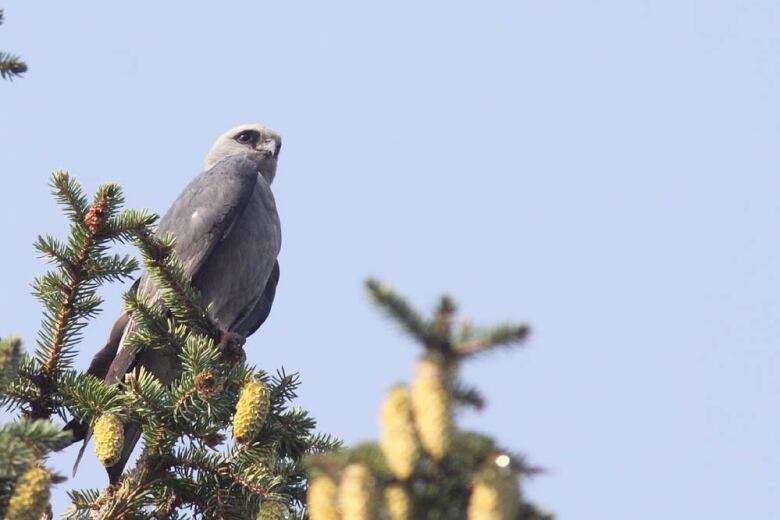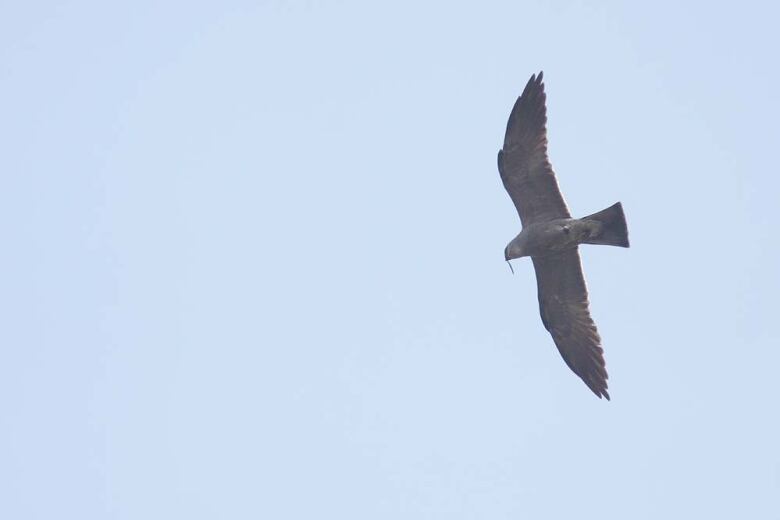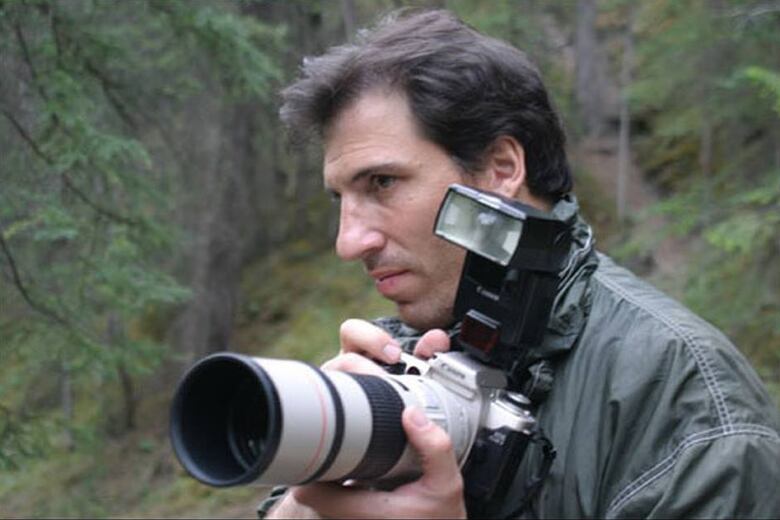Abandoned U.S. bird to become Manitoba wildlife ambassador
Rare pair of Mississippi kites flew far afield of southern U.S. range, nested in Winnipeg in 2014
A baby bird that was abandoned as a chick two summers ago in Winnipeg is now intraining to become a wildlife ambassador for the people who tookher in.
"Because this bird is such aunique one,we decided it was a good education ambassador, a good story to tell people about," says Tiffany Lui, animal care co-ordinator with the Wildlife Haven Rehabilitation Centre (WHRC). "She's a very cute one."
In the summer of 2014, a pair of feathery foreign residents nested in a tall, burly tree near the Assiniboine River not far from downtown Winnipeg. This was uncharacteristic behaviourfor the birds; their kindtypicallyprefer tostaycloseto home, nearer to the warm and buggy habitats of the south-centraland southeastern United States.

Bird-lovers descended on the area,crickingtheir necks and binoculars to the tree canopies for a glimpse.BiologistChristian Artuso with Bird Studies Canada wasamong thefirst rush of birders to hit the scene for a spotting.
To everyone's surprise, against the oddsand possiblytheir better judgment, the birds bred and gave birth to a baby in a world unknown to them. They were out of their element, but you couldn't really tell that to look at them.

Mississippi kites feast on a diet of insects primarily, but will also hunt snakes and lizards. As luck would have it, mom and dad were decent hunters. They were photographedpicking off dragonflies in mid-flight near the Assiniboine that summer, which they faithfullyflew back to their wee one.
Wildlife officials worked hard to keep the exact location of the nest a secret. Word was spreadingand there was a fear too much attention could spook them away or hurt their chances of raising the chick.
Premature perch departure
And then one evening in July, something unfortunate happened.
"The chick fell from the nest just prior to natural fledgling," Artuso said. "I got there as soonas I could."
The baby bird was flexing and flapping away on the rim of the nest, when mom and dad unexpectedly arrived home.
"Both parents landed on the nest simultaneously. Their sudden simultaneouslanding caused the chick to fall (at least this is how it was described to me by the two people who observed it:one of my crew members and a volunteer of the Delta Marsh Bird Observatory)."
They made a costly mistake.That happens in nature it's kind of cruel sometimes.- Christian Artuso
The chick didn't appear to be that injured at the time, so after a few minutes Artusoput the bird as high as he could in the tree and left for the night.
"The chick was calling and we were hopeful the parents would resume feeding," he says.

The next day, the chick still perched in the tree and unfed by its parents,Tracy Maconachie (theco-ordinatorof the Peregrine Falcon RecoveryProject), Jim Duncan (the director of Manitoba Conservation's wildlife branch) and Artuso discussed next steps.
A group of volunteers came together to help, including an arborist who had access to a bucket truck. They used the extending arm on the truckto place a crate (an artificial nest), and the bird with it, as high as they could in the tree.
The parents didn't show, so they took the chick to the AssiniboineParkZoo's animal hospital for a check up with a veterinarian. "The prognosis was pretty good... It was relatively healthy," Artuso says. This bird wasn't going to be reunited with its parents after all, but everyone was still optimisticit could be set free.
They looked for specialists in the U.S. with experience with Mississippi kites but things didn't work out.The Wildlife Haven Rehabilitation Centrewas next on the list.

In order to be rehabilitated, everything possible must be done to prevent babies like this bird from imprinting,coming to identify with their caregivers and essentially forgetting they are birds.
Raptor chicks areparticularlysusceptible to imprinting on their owners, which is one reason why Artusofought every urge to visit with the bird.
"Once the decision was made to bring the bird in, I chose not to visit the bird, not to go see the bird, obviously to minimize human contact with the animal and maximize the chances of a rehabilitation,"he said.
"It became apparent pretty quickly to them (WHRC)that the bird would not be releasable."
Ambassador-in-training

"That can be stressful for any bird. Some birds are able towork the crowd, so to speak. Others are not."
She's been responding well to the trainer, but hasn't yet been trotted out in front of a loud and gleeful crowd. While it isn't clear yet when she'll officially be introduced to the public, the centre is hoping the bird will make its first public appearance this spring.
"It's quite possiblethose parents were young, inexperienced ... could've been their first time breeding. They made a costly mistake. That happens in nature it's kind of cruel sometimes," Artuso says.
"I certainly hope the bird brings something positive in the way that it educates the public."












_(720p).jpg)


 OFFICIAL HD MUSIC VIDEO.jpg)
.jpg)



























































































